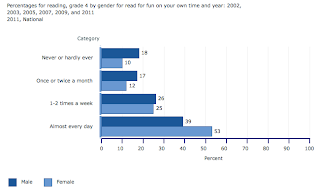By Neil BohnertA selection from Origami in the Boardroom and Other Misadventures in Nonprofit Governance©
It was a full agenda and one that promised no surprises. The attention of the board turned in the direction of a board member of larger-than-life bearing entering the room. The director, a very successful professional of national stature, had written extensively on a variety of nonprofit issues. When he spoke, people listened. The problem was he was not regular in his attendance and he had a talent for disrupting the debate on issues by throwing out questions that convoluted the issue. His presence often changed the board’s demeanor, instilling both a note of confidence and an element of mild anxiety. I watched as one after another of the menagerie acted out their predictable behaviors. There were occasional glances in his direction, wondering if there would be a strike today. Suddenly he spoke, decisively and authoritatively, taking the discussion in an unexpected direction.
The reaction was swift. Many scattered, looking for a safe position. A few, the stronger leaders, stood firm, waiting for calm to be restored. Some moved in quickly and others waited for an opportunity. The attack, though not unusual, had come without warning. The chair worked to refocus the discussion and bring everyone back to the issue.
These types of behaviors are predictable. There are many personalities present in any organization and we need all of them on the board for a balanced, healthy board environment.
It is important to have experts and dissenters and people who voice unorthodox ideas on the board, people who will ask the important questions and hold the board to a full discussion on the issues before making decisions—informed decisions. Far from shutting out people of dissenting or radical views, we should welcome them and celebrate their contributions. Too many organizations work diligently to build boards of like-minded people and avoid divided opinions. This can lead boards to dangerous outcomes. The problem with this board was that while this director had extraordinary wisdom to contribute, his spotty attendance left the board ill-prepared for his occasional attacks.
There are many species common to any organization and they all bring their individual strengths and flaws to the boardroom. We need to accept both and to take advantage of their assets and compensate for their negatives.
Sheep, the most common species, are usually docile and content. They listen to the loudest voice, run from wolves, and are constantly bleating.
| Assets |
| § Can be counted on to always be present—no vacant seats here § Most comfortable in numbers and will respond to a call for a show-of-strength |
| Liabilities |
| § Docile nature inhibits individual thinking § Tend to shy away from leadership; don’t look to them for developing future leaders |
Elephants exhibit great stature and stability. They are slow to anger, have long memories, and follow ancestral paths when wandering.
| Assets |
| § Strong; can be called on for heavy lifting and for rounding up the menagerie § Memory of the past provides constancy and sure footing |
| Liabilities |
| § Act out of the comfort of the past § Can be annoying with reminders of “the way it used to be” |
Leopards and Cheetahs are few in number, but very powerful. They wait in hiding and create sudden chaos when on the attack. | Assets |
| § Remain quiet, watching the menagerie, then become outspoken § Strong bearing § Incisive; make quick and sound judgments § Can be a strong voice and spokesperson § Can be used to keep the herd in check; others look to them for clues on when and how to move |
| Liabilities |
| § Can misdirect the board’s progress with sudden, unexpected moves |
Tortoises are few in number and very resilient. They move slowly, withdraw at the slightest threat, spend a lot of energy carrying a shield to ward off threats, and they live forever.
| Assets |
| § Can be a helpful “brake” to slow the momentum when actions are moving too fast or are out of control |
| Liabilities |
| § Can’t be prodded or forced to move |
Wolves move in packs and prey on the weakest in the menagerie. They submit to the dominant leader.
| Assets |
| § The pack culls the herd; can be called on to deal with a weak or inappropriate board action § Can be helpful in exposing non-performing board members and moving them out |
| Liabilities |
| § The pack mentality cannot always be managed § Once on the hunt, may not be diverted |
Otters are playful, entertaining, sociable, and likable, with quick wits. They are adept at using humor and whatever is at-hand to achieve an objective.
| Assets |
| § Can use humor to interject insights and “lighten” a debate or meeting § Social skills can facilitate a discussion § Usually excellent networkers (a plus for fundraising) |
| Liabilities |
| § Board time is social time; can delay or prolong a meeting to keep the social time going |
Wildebeests are large, lumbering animals that move in large numbers, devouring food and kicking up a lot of dust. Their presence cannot be ignored.
| Assets |
| § Their large mass adds weight to board actions, both in and outside of the boardroom § Keep their heads down, but one among them is always alert § Tend to move slowly, but can be set on a run by a threatening intruder |
| Liabilities |
| § Can consume a lot of resources with their size and numbers § Make a lot of dust that can obscure facts |
Other species will appear on the board from time-to-time. They may be sharks or hawks, porpoises or doves. All will have their individual behaviors and their assets and flaws.
What can we learn from this true-life misadventure? Let’s start with celebrating diversity. We need people on the board who are strong and confident. We need dissenters. We also need leaders and followers. And we need others who will occasionally help to cull the menagerie and make room for new species.
Let’s start with expecting regular attendance. An empty chair contributes nothing and a director whose attendance is spotty disrupts board cohesiveness. It is the board chair’s responsibility to confront directors who are failing the group.
Let’s start with expecting excellence from each person on the board. That means adopting a job description or “board proposition” that specifies what conduct is expected of each person on the board.
Let’s start with building a board profile that identifies the skills and expertise needed on the board to serve the strategic priorities of the organization. What animals are needed?
Let’s get started!







































